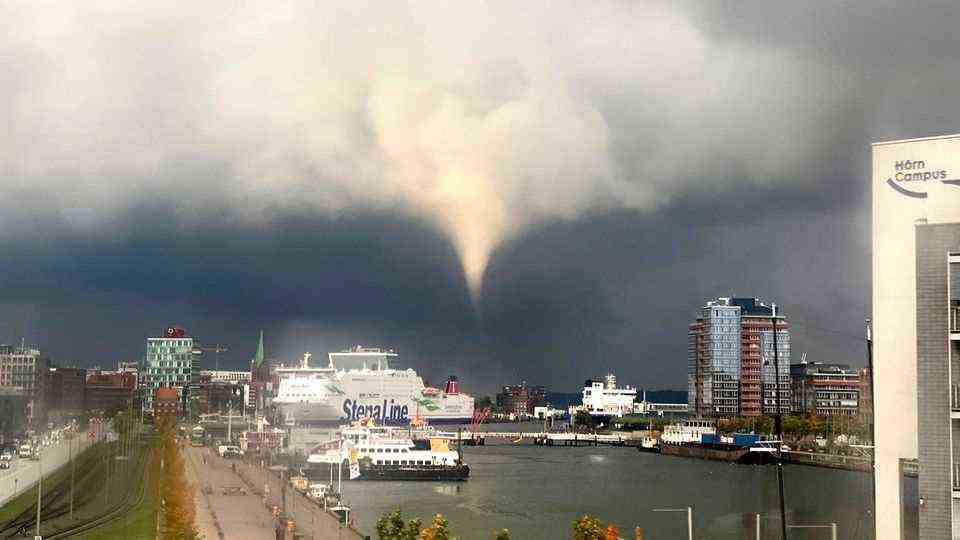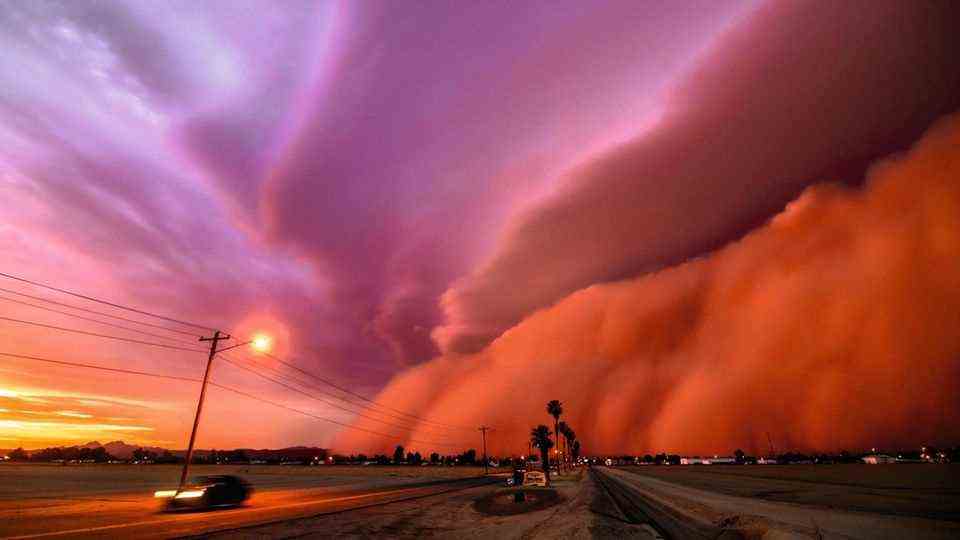interview
Turrets
Expert: “Tornadoes are part of the weather in Germany”
At the end of September, a tornado whirled several people through the air in Kiel and washed them into the water.
© Philipp Brandl / Picture Alliance
Tornadoes often cause a stir nationwide. The wind trousers are actually nothing special in Germany, as the expert Thomas Sävert in star-Interview explained.
Note: This article first appeared on October 1, 2021 and will be published again at this point due to the current weather conditions.
Mr Sävert, according to the tornado list you are in charge of, this year there have already been 28 confirmed tornadoes, 14 plausible and 169 suspected cases. Is a tornado like the one in Kiel in Germany at the end of September nothing special?
No. Actually, that’s nothing special. In this case, of course, when it appears so spectacular and causes damage and people are injured. In Kiel there were even two tornadoes, as can be seen on some videos. Fortunately, nobody was killed. But tornadoes are part of the weather in Germany, which many are not aware of. This is already shown by the high numbers of confirmed and suspected cases mentioned. They will also increase this year.
Can tornadoes be predicted?

Thomas Sävert is a meteorologist and expert on tornadoes. He is a member of the Tornado Working Group Germany and operates the portals Tornadoliste.de and Unwetteragentur.de
© Unwetteragentur.de
There are two ways tornadoes arise. One is very spontaneous in showers and thunderstorms. They usually don’t last that long, you can hardly get it done. It looks different when there are really severe thunderstorms that show rotations, so-called super cells. You can see them on radar images and then say: The probability that a tornado will occur is significantly higher here. If there is then another sighting, for example by a so-called “storm chaser” – this is mainly known in the USA, but there is also in Germany – then you can issue a warning immediately. This has also worked several times in Germany, but there aren’t that many storm chasers in this country.
In cases like the one in Kiel it looks rather bad.
What are the characteristics of a tornado? You know the characteristic turrets, is there anything else you need?
Tornadoes and tornadoes are one and the same thing. In the USA they are also known as twisters, there is no difference, not even between tornadoes in Germany and the USA. It’s all the same physical phenomenon.
A tornado always arises in connection with a shower or thunderstorm, with an updraft. The tornado is characterized by the fact that a small-scale vortex extends from the cloud to the ground. But it doesn’t have to be continuously visible. A tornado is a vortex of air and it is initially invisible. At the top it becomes visible through condensation, i.e. cloud formation, then there is this funnel cloud. And it becomes visible below because something is whirled up from below.
How strong can the storms get in this country?
Weak tornadoes have less than 118 kilometers per hour (km / h) wind speed, that would be the threshold for a hurricane. Strong tornadoes can reach speeds of up to 400 kilometers per hour or more – also in Germany, and not only in the USA. There is the internationally used Fujita scale, some may be familiar with the one from the film Twister. In the case of tornadoes, this ranges from F0 to F5. At F5 we are talking about wind speeds of more than 420 km / h, F1 starts at 118 km / h. In 1971 and 1973 in Kiel we had two tornadoes with strength F3 and wind speeds between 250 and 300 km / h. In 1979 we even had a tornado in Germany that whirled combine harvesters that weighed tons through the air.
Do you know how strong the tornado was in Kiel?
At the moment we assume that the tornado in Kiel was in the upper range of F1. F1 ranges from 118 km / h to a good 180 km / h. Of course, you can’t state that exactly, you would need measurements for that. But you can tell a lot about the damage done. And the Fujita scale is based on the damage done. We last had a tornado in East Friesland this year (on August 16 in Großheide, editor’s note), which was already in the upper range of F2 based on the damage. And that’s wind speeds of around 250 kilometers per hour. That is a different house number. The strength F1 occurs several times a year in Germany.

Are there any indications that there is a link to climate change? Is it likely that the number of tornadoes in Germany will increase?
That is difficult to answer. First, we would need meaningful statistics for this. Since we have only been investigating tornadoes for 20 years on a voluntary basis, our statistics are actually not yet sufficient. However, the 20 years show that the variability, i.e. the changeability, is extremely large from year to year. The number of confirmed tornadoes fluctuates extremely from year to year. So far there is no trend at all. In other words, we are not yet able to say anything about whether there is a connection with climate change. There is research into the fact that local storms may become more or more severe in the future, with the emphasis on may. However, it cannot be said in general whether this is also associated with tornadoes. Because tornadoes are not only dependent on temperature, but also on a number of other factors. Therefore, as I said, the question is not so easy to answer.



